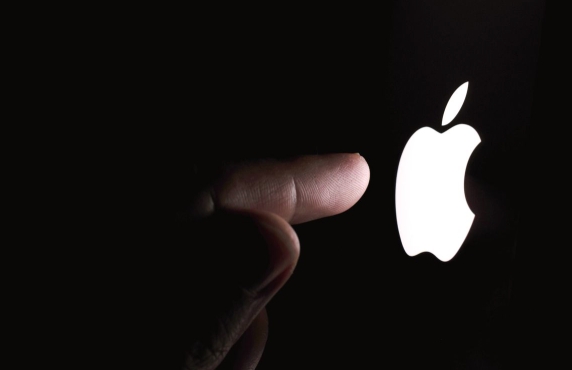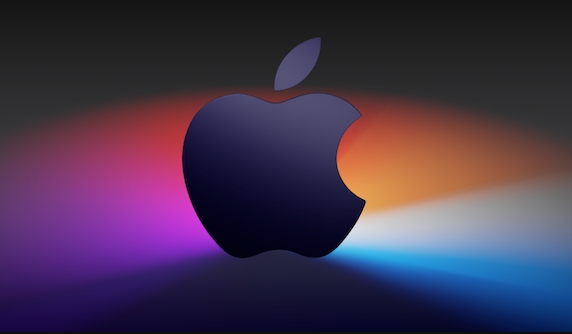 Computer Tutorials
Computer Tutorials
 System Installation
System Installation
 Fixing the 'Untrusted_Cert_Title' error during macOS installation
Fixing the 'Untrusted_Cert_Title' error during macOS installation
Fixing the 'Untrusted_Cert_Title' error during macOS installation
Jul 07, 2025 am 01:06 AMTo resolve the "Untrusted_Cert_Title" error, you must first make sure to use the official certified installer and create it correctly. Secondly, check whether the system time settings are accurate, then update the firmware and bootstrap, and finally try to install macOS through the network recovery. The specific steps are: 1. Use the official App Store installer and create a USB installer through Apple tools such as createinstallmedia to avoid manually copying files or using third-party tools; 2. After entering recovery mode, correct the date and time through terminal commands; 3. Check and update the Mac's EFI or firmware to confirm that the hardware supports the target macOS version; 4. Long press Option Command R to start the network recovery mode, and download the verified system image from the Apple server for installation. In most cases, this problem stems from a damaged installation media or a wrong time, and prioritizing these two items usually solves the problem.

If you're trying to install macOS and run into the "Untrusted_Cert_Title" error, it usually means the system can't verify the installer's certificate. This issue commonly shows up during a clean install or when using a USB installer that isn't properly signed or configured.

Here's how to tackle it based on different scenarios:

1. Make Sure Your Installer is Official
Apple uses signed certificates for macOS installers. If you're booting from a USB drive or an external volume, the installer must be created correctly with Apple tools like createinstallmedia .
- Use the official macOS installer from the App Store
- Create your USB installer using Terminal commands provided by Apple
- Avoid third-party tools unless they're known to preserve certificate signatures
?? A common mistake is copying the installer files manually instead of using the proper method. That breaks the signature chain and leads to this error.

2. Check Date and Time Settings
The certificate verification process relies on accurate date and time. If your system clock is off — especially if it's far in the past or future — macOS won't trust any certificate, even valid ones.
To fix:
- Try booting into Recovery Mode (Command R) first
- Open Terminal and use the
datecommand to set the correct date/time - Reboot and try installing again
This often happens on older Macs with dead PRAM batteries or virtual machines with incorrect clocks.
3. Update Firmware and Bootloader
Older Mac models sometimes have outdated firmware that doesn't recognize newer certificates used by recent macOS versions.
- Check Apple's support site for EFI or firmware updates relevant to your Mac model
- Make sure your machine meets the minimum hardware requirements for the macOS version you're installing
Sometimes you'll need to upgrade to a supported macOS version first before upgrading further.
4. Try Installing Online (Internet Recovery)
If all else fails, use Internet Recovery. It downloads a verified copy of the OS directly from Apple servers, bypassing local certificate issues.
Hold Option Command R at startup to enter Internet Recovery Mode. It may take a while depending on your internet speed, but it's reliable.
This works best if you're not tied to a specific macOS version. Internet Recovery gives you the OS that came with your Mac — or the latest compatible one.
Most cases of "Untrusted_Cert_Title" are due to either corrupted install media or incorrect system time. Fix those two things first, then look into firmware and recovery options. It's not complicated, just easy to miss a step.
The above is the detailed content of Fixing the 'Untrusted_Cert_Title' error during macOS installation. For more information, please follow other related articles on the PHP Chinese website!

Hot AI Tools

Undress AI Tool
Undress images for free

Undresser.AI Undress
AI-powered app for creating realistic nude photos

AI Clothes Remover
Online AI tool for removing clothes from photos.

Clothoff.io
AI clothes remover

Video Face Swap
Swap faces in any video effortlessly with our completely free AI face swap tool!

Hot Article

Hot Tools

Notepad++7.3.1
Easy-to-use and free code editor

SublimeText3 Chinese version
Chinese version, very easy to use

Zend Studio 13.0.1
Powerful PHP integrated development environment

Dreamweaver CS6
Visual web development tools

SublimeText3 Mac version
God-level code editing software (SublimeText3)
 Detailed explanation of the installation steps of MySQL on macOS system
Apr 29, 2025 pm 03:36 PM
Detailed explanation of the installation steps of MySQL on macOS system
Apr 29, 2025 pm 03:36 PM
Installing MySQL on macOS can be achieved through the following steps: 1. Install Homebrew, using the command /bin/bash-c"$(curl-fsSLhttps://raw.githubusercontent.com/Homebrew/install/HEAD/install.sh)". 2. Update Homebrew and use brewupdate. 3. Install MySQL and use brewinstallmysql. 4. Start MySQL service and use brewservicesstartmysql. After installation, you can use mysql-u
 How to install AdobeReader on macOS
May 16, 2025 pm 08:33 PM
How to install AdobeReader on macOS
May 16, 2025 pm 08:33 PM
AdobeReader no longer supports macOS, and AdobeAcrobatReaderDC is required. 1) Visit Adobe's official website and download a version suitable for macOS. 2) Open the .dmg file, drag the icon to the "Applications" folder, enter the administrator password and complete the installation. 3) Start Adobe AcrobatReaderDC from the "Applications" folder.
 How to install macOS on a blank hard drive?
Jul 07, 2025 am 12:32 AM
How to install macOS on a blank hard drive?
Jul 07, 2025 am 12:32 AM
Installing macOS from scratch is not complicated, just prepare the tools and follow the steps. First, prepare a working Mac, at least 16GB USB drive, a stable network connection and sufficient time; secondly, it is recommended to use the createinstallmedia command in Terminal to create a bootable installer; then enter the installation interface through RecoveryMode or USB installer; then use DiskUtility to format the target hard disk as APFS or MacOSExtended; finally follow the prompts to complete the installation process.
 Fixing the 'Untrusted_Cert_Title' error during macOS installation
Jul 07, 2025 am 01:06 AM
Fixing the 'Untrusted_Cert_Title' error during macOS installation
Jul 07, 2025 am 01:06 AM
To resolve the "Untrusted_Cert_Title" error, you must first make sure to use the official certified installer and create it correctly. Secondly, check whether the system time settings are accurate, then update the firmware and bootstrap, and finally try to install macOS through the network recovery. The specific steps are: 1. Use the official AppStore installer and create a USB installer through Apple tools such as createinstallmedia to avoid manually copying files or using third-party tools; 2. After entering recovery mode, correct the date and time through terminal commands; 3. Check and update the EFI or firmware of the Mac to confirm that the hardware supports the target macOS version; 4. Long press Option Command R to start the network
 macOS could not be installed because the path /System/Installation/Packages/OSInstall.mpkg appears to be missing or damaged
Jul 06, 2025 am 01:04 AM
macOS could not be installed because the path /System/Installation/Packages/OSInstall.mpkg appears to be missing or damaged
Jul 06, 2025 am 01:04 AM
When encountering the prompt "macOS could not be installed because of the path/System/Installation/Packages/OSInstall.mpkgappearstobemissingordamaged", it means that the system installation package is missing or damaged during installation or upgrading macOS, which is common in old version recovery images, third-party boot disks or disk structure abnormalities; solutions include: 1. Confirm whether the boot media is complete, it is recommended to use the official createinstallmedia command to create a boot disk and check whether OSInstall.mpkg exists; 2. Select " from recovery mode"
 How to install macOS without an Apple ID?
Jul 14, 2025 am 01:19 AM
How to install macOS without an Apple ID?
Jul 14, 2025 am 01:19 AM
You can install macOS without using AppleID, but some functions are limited. There is no need to force login to AppleID during the installation process. You can create a local account to use the basic functions of the system. However, functions such as iCloud synchronization, AppStore download, and search for my Mac require AppleID to enable it. 1. When installing, you can use the USB drive to boot disk or recovery mode to create a local account; 2. Local account can browse web pages, edit documents, program development, and play media, but it is impossible to use iCloud and download most AppStore applications; 3. Skip AppleID to log in for the first time to create a local account; 4. Suitable for computer room equipment, development and testing, and privacy-sensitive users, and it is recommended to bind Apple to long-term use.
 How long does a macOS installation take?
Jul 03, 2025 am 01:06 AM
How long does a macOS installation take?
Jul 03, 2025 am 01:06 AM
AcleanmacOSinstallationtypicallytakes30minutestoanhour,butseveralfactorscanextendtheprocess.1)InternetRecoverymayadd15minutestooveranhourforOSdownload,dependingoninternetspeed.2)Installationtimevariesbetween20–40minutesafterdownloadcompletion.3)Stora
 OpenCore Legacy Patcher for macOS installation guide
Jul 19, 2025 am 01:26 AM
OpenCore Legacy Patcher for macOS installation guide
Jul 19, 2025 am 01:26 AM
If the device is not in Apple's official support list, you can install macOS on old Macs through OpenCoreLegacyPatcher (OCLP). The specific steps are as follows: 1. Confirm the device compatibility, such as MacBookPro, iMac or Macmini around 2012, and check whether the motherboard chipset supports EFI mode; 2. Prepare a 16GB or larger USB drive and make a macOS installation USB drive, write to the image using official commands or third-party tools; 3. Download and run OCLP, select the target device for patch processing, automatically solve the kernel expansion and driver compatibility issues, and manually adjust the patch options if necessary; 4. Insert the patched USB drive, press the Option key when restarting






